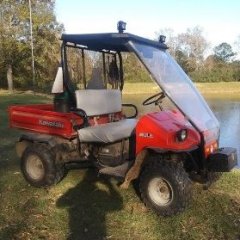By
aefron88
This post will explain how to hook up your PC to the ECU of a Hisun/Coleman/Etc UTV to be able to read error codes & engine parameters for troubleshooting purposes.
This is applicable to all small engines using the Delphi MT-05 ECU. This should cover all fuel injected Hisun models, as well as various other Chinese FI engines, as the Delphi MT-05 ECU seems to be the favored ECU solution.
Even though we get actual engine error codes to display on the dash, sometimes we have “pending codes” (not yet confirmed by the ECU) or other intermittent issues that are hard to diagnose, for example a poorly connected sensor that may give intermittent false readings, or a sensor that’s putting out bad date, but not bad enough for the ECU to realize.
The setup requires 2 cables, which are available for around $25 combined, a PC with a USB port, and some charityware software called “HUD ECU Hacker”. This gives the same functionality as the $300 dealer code scanner for a fraction of the price.
In searching I found info about HUD ECU Hacker, but I have yet to see info anywhere about how to hook it up to a Hisun, so I took the leap and bought some cables, and made it work. I will show a step by step of how to do so in post two.
I will be breaking this down into 2 posts:
Delphi ECU Info & Overview (This post)
System setup & use
Delphi ECU Info (Skip ahead to the next post if your eyes glaze over technical details)
The Delphi MT-05 ECU was developed to allow small engines to use fuel injection. A fuel injection system requires feedback from various sensors to operate efficiently. This feedback allows the adjustment of ignition timing, fuel injection volume, etc to efficiently and cleanly produce the most power possible from a given engine.
The MT-05 ECU has a number of sensors that are required for proper functioning including; Coolant temp, crankshaft position, intake temp, intake pressure, exhaust O2, throttle position, as well as some other optional sensors that are used on more complex vehicles.
From the sensors the ECU adjusts: Fuel injector timing/pulse, Idle air control valve, and ignition coil
The Delphi MT-05 puts out diagnostic data, however it is not ODB2 like a modern car, where is where it gets tricky reading it. There are three options, there is an old 16 bit piece of software Delphi has that is not able to run on a modern computer, there is the motorscanner tool for dealers ($300), or there is freeware HUD ECU Hacker with the proper cables.







Recommended Posts
Create an account or sign in to comment
You need to be a member in order to leave a comment
Create an account
Sign up for a new account in our community. It's easy!
Register a new accountSign in
Already have an account? Sign in here.
Sign In Now